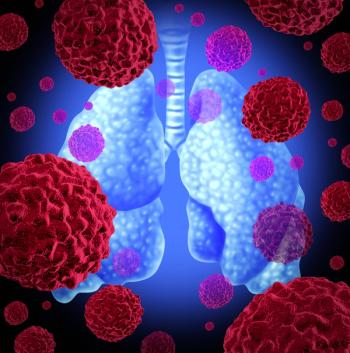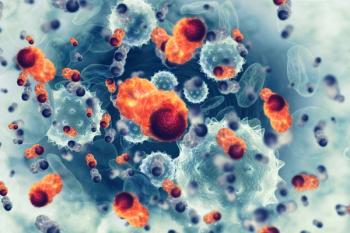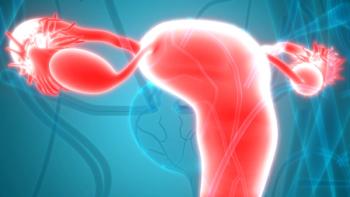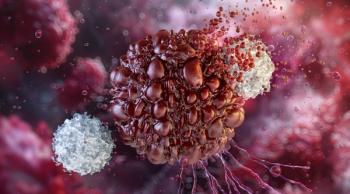
Patterns of Genetic Recurrence in DCIS Suggest Undertreatment With Biomarker-Directed Strategies
A significant proportion of patients with nonclonal ductal carcinoma in situ were found to have recurrence that was not genetically linked to the primary tumor.
Patients with ductal carcinoma in situ who recieved biomarker-driven therapy were found by investigators to be undertreated due to recurrence that was not genetically linked to the primary tumor, according to a presentation from
“Data from the 12% of patients in our cohort who developed new, independent primary tumors raised the question of whether using these genetic biomarkers for prediction of recurrence is a good idea,” Tanjina Kader, PhD, a postdoctoral researcher at the Peter MacCallum Cancer Centre in Melbourne, Australia, said in a news release.2 “The fact that these patients did not have one of the genetic events that are more common in recurring DCIS would suggest that their risk was low, leading to undertreatment.”
Kader said DCIS is a preinvasive breast lesion, suggesting that it is the stage right before invasive breast cancer. Patients diagnosed with DCIS are receive surgery or surgery combined with radiotherapy and, following this initial treatment, most do not recur. However, 25% of these patients will come back with either DCIS or invasive breast cancer, half of which will be invasive cancer.
In this analysis of 67 patients with DCIS who experienced ipsilateral recurrence, Kader and colleagues found 18% of cases were non-clonal. The likelihood of clonality was not found to be significantly associated with the grade of the primary DCIS, estrogen receptor (ER), or HER2 status of the primary DCIS, the recurrence type, or prior radiotherapy treatment. These new primary tumors suggest that there is a high-risk environment or a genetic predisposition for these patients and as a result, these patients are highly susceptible to developing new tumors.
“These findings can influence how patients are managed in the clinic,” Kader said. “For example, the occurrence of a new primary lesion in the same patient suggests a high-risk breast environment in which new tumors may develop over the years. Therefore, such patients would be candidates for preventative breast removal surgery even if the tumor is small, and they might be referred to genetic testing to ascertain whether they have any genetic predisposition.”
Investigators assembled cohorts of non-recurrent (n = 32) and recurrent (n = 71) patients with DCIS. For DNA sequencing, the analysis used either a targeted sequencing panel, whole exome sequencing, or low-coverage whole genome sequencing. The method of DNA sequencing was chosen based on DNA availability.
Investigators observed no significant differences between patients with nonrecurrent and recurrent disease in terms of disease grade, ER status, HER2 status, or initial treatment type.
When investigators compared the genomic profiles of the nonrecurrent and recurrent cohorts, they found that multiple chromosomal changes and TP53 mutation status could be potential biomarkers to predict recurrence from primary DCIS. In patients with clonal recurrence (n = 55) changes in chromosomes 5, 11, 17, and 20 were highly enriched, but were not among patients with nonrecurrence (n = 12).
Clonal primary DCIS harbored more TP53 mutations compared with non-recurrent DCIS (P < .05). However, because not all recurrent tumors are clonal and the genomic profiles of non-clonal and non-recurrent cases are very similar, Kader said it is still unclear whether clinicians should use biomarkers to predict for DCIS recurrence.
“We are proposing that, in the future, instead of treating all recurrent patients the same way, we have to first find out whether these patients fit into nonclonal [recurrence],” Kader said during her presentation. “Because for these patients, surgery only is not going to be sufficient. These patients are highly susceptible to developing new tumors and therefore they should consider preventative therapies, [including] bilateral mastectomy, endocrine therapy, or genetic counseling.”
Kader noted that study limitations included the phylogenetic analysis being based solely on chromosomal changes. A full phylogenetic analysis of all tumor-specific mutation was unable to be performed because the study authors lacked the baseline genetic information from normal cells. Investigators did examine the most relevant breast cancer driver mutations, including TP53 and PIK3CA.
References
- Kader T, Mahale S, Zethoven M, et al. Predictive biomarkers of recurrence may not be useful for deescalating treatment of breast ductal carcinoma in situ due to de novo ipsilateral breast carcinoma development. Poster presented at: 2022 AACR Annual Meeting; April 8-13, 2022; New Orleans, LA. Abstract 43.
- AACR. Recurrent non-invasive breast tumors may not always be related to the primary lesion. News release. April 10, 2022. Accessed April 10, 2022.
Newsletter
Stay up to date on recent advances in the multidisciplinary approach to cancer.
































































































